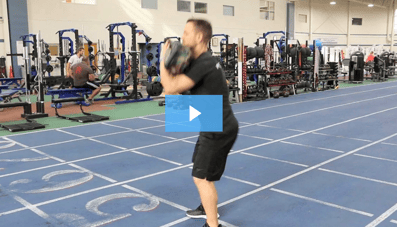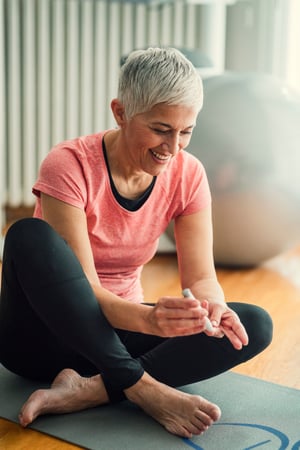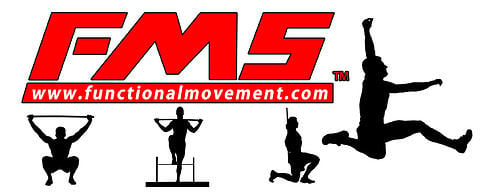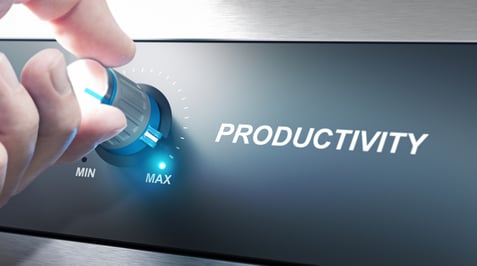 It should come as no surprise to anyone that High Intensity Interval Training (HIIT) and Metabolic Conditioning workouts are crazy-popular and are here to stay for the foreseeable future. Research continues to report the scientific findings associated with the many benefits of this style of training. In addition to the research, the anecdotal evidence and many testimonials from normal folks have shown amazing results from functional training done at higher intensities.
It should come as no surprise to anyone that High Intensity Interval Training (HIIT) and Metabolic Conditioning workouts are crazy-popular and are here to stay for the foreseeable future. Research continues to report the scientific findings associated with the many benefits of this style of training. In addition to the research, the anecdotal evidence and many testimonials from normal folks have shown amazing results from functional training done at higher intensities.
Benefits of HIIT
Here are just a few of the benefits that are continually reported from training at higher intensities:
- Burns a bunch of calories and fat
- Shortens workouts
- Improves multiple facets of fitness (cardio, endurance, strength, power)
- Includes fun and energizing movements
The bottom line is that training at higher intensities coupled with the proper exercises provides a bunch of bennies with a low time cost. Sounds great, right? Where can you go to reap such benefits?
NIFS Class of the Month
BODYATTACK is our class of the month, and it delivers that high-intensity and fun style of training that will help you attack your fitness goals. Check it out:
{VIDEO}
BODYATTACK Highlights
Looks pretty cool, right? Ready to give a class a try? You can expect a great deal of the following:
- High energy
- Suited for all fitness levels
- Functional fitness focus
- Big calorie burn
- Fun and athletic movements
- Improves agility, coordination, and stamina
- Energizing music
- Group atmosphere to keep you motivated
Tips for Success
Here are some things to keep in mind:
- Choose the length of class that is right for you. You do not have to take a whole class. Start slow and ramp up to a longer class.
- Be sure to pay attention to the instructor for movement variations. Watch, listen, and take the options the instructor gives you for your individual success.
- Take a buddy with you! Working in a group of like-minded people can be super powerful and will help keep you on track and help you enjoy the class even more.
I love to train hard; there is no better feeling than giving your best effort and knowing it after a great workout! If training hard is something that has been missing for you, don’t wait any longer: get into a BODYATTACK class immediately and “FEEL IT ALL”! Classes are offered on Tuesdays at 6:05pm and Thursdays at 5:15pm.
This blog was written by Tony Maloney, ACSM Certified Exercise Physiologist and Fitness Center Manager. To find out more about the NIFS bloggers, click here.


 It’s time to get serious about goal setting. Setting goals can help you dig more deeply into fitness and think about what you truly want to accomplish. Goals can range from wanting to walk 1 mile to squatting 2 times your body weight, and absolutely everything in between and beyond. Everyone is on a different path to fitness, so whatever your goals may be is completely up to you.
It’s time to get serious about goal setting. Setting goals can help you dig more deeply into fitness and think about what you truly want to accomplish. Goals can range from wanting to walk 1 mile to squatting 2 times your body weight, and absolutely everything in between and beyond. Everyone is on a different path to fitness, so whatever your goals may be is completely up to you. Squatting has always been the go-to exercise for those who want to make glute gains. You have probably heard someone say, “If you want to get better glutes, squatting is the way to go.” Recently, though, hip thrusters have gained momentum as the best exercise for glute development. Although, there is no concrete evidence that one is better than the other, some
Squatting has always been the go-to exercise for those who want to make glute gains. You have probably heard someone say, “If you want to get better glutes, squatting is the way to go.” Recently, though, hip thrusters have gained momentum as the best exercise for glute development. Although, there is no concrete evidence that one is better than the other, some 
 Standing in the bread aisle, flipping over the seventh loaf of bread, scanning the fine print, asking yourself which brand is best… Giving up trying different bread after five minutes and just picking what we usually go for—we’ve all been there! I want to help clear up the confusion by offering some recommendations on what numbers to look for and the most important places to look on the label to decide what brand is healthiest, whether that be crackers, bread, peanut butter, granola bars—you name it!
Standing in the bread aisle, flipping over the seventh loaf of bread, scanning the fine print, asking yourself which brand is best… Giving up trying different bread after five minutes and just picking what we usually go for—we’ve all been there! I want to help clear up the confusion by offering some recommendations on what numbers to look for and the most important places to look on the label to decide what brand is healthiest, whether that be crackers, bread, peanut butter, granola bars—you name it! Has a physician or other healthcare provider recently told you to improve your diet and exercise? If you are like most Americans, there is also a pretty good chance that you have a stressful lifestyle that leaves you short on the time, money, and energy it takes to implement these changes. Besides, other than a few extra pounds, you haven’t really noticed any changes to your body, right?
Has a physician or other healthcare provider recently told you to improve your diet and exercise? If you are like most Americans, there is also a pretty good chance that you have a stressful lifestyle that leaves you short on the time, money, and energy it takes to implement these changes. Besides, other than a few extra pounds, you haven’t really noticed any changes to your body, right? One of the most critical things we do for our health is sleep. Without sufficient sleep, we risk impairing cognitive function, developing chronic diseases and mental disorders, and even an early death.
One of the most critical things we do for our health is sleep. Without sufficient sleep, we risk impairing cognitive function, developing chronic diseases and mental disorders, and even an early death.


 How many times have you looked back at a day and thought, “Man, I wish I would’ve been more productive,” while your to-do list seems to grow and grow. Or maybe you feel like you were crossing a lot of things off the list, but no meaningful work was actually accomplished? In my experience, it’s almost a weekly occurrence. I feel like I’m flying around at work, checking off boxes. But then I get to the end of my day, scan back through, and realize that I didn’t actually work on any of the big jobs that I had originally intended. Its days like these that made me want to begin a blog series that attacks the idea of productivity: what it actually is, where our pitfalls lie, and how we can improve on it to get more out of each day.
How many times have you looked back at a day and thought, “Man, I wish I would’ve been more productive,” while your to-do list seems to grow and grow. Or maybe you feel like you were crossing a lot of things off the list, but no meaningful work was actually accomplished? In my experience, it’s almost a weekly occurrence. I feel like I’m flying around at work, checking off boxes. But then I get to the end of my day, scan back through, and realize that I didn’t actually work on any of the big jobs that I had originally intended. Its days like these that made me want to begin a blog series that attacks the idea of productivity: what it actually is, where our pitfalls lie, and how we can improve on it to get more out of each day.
